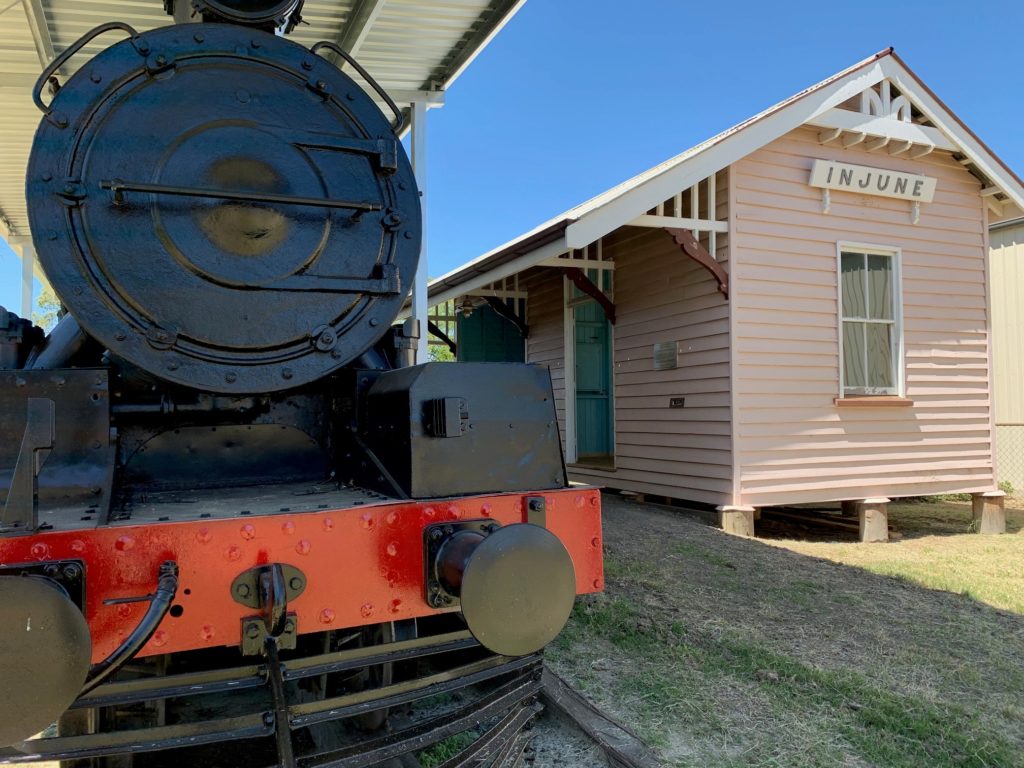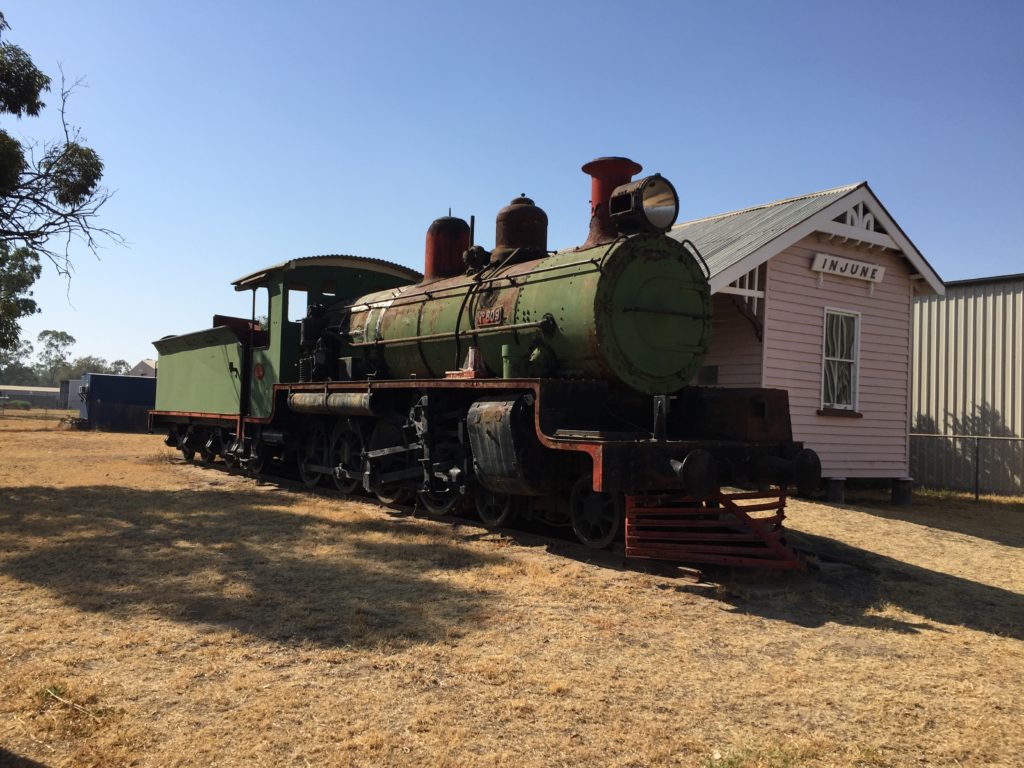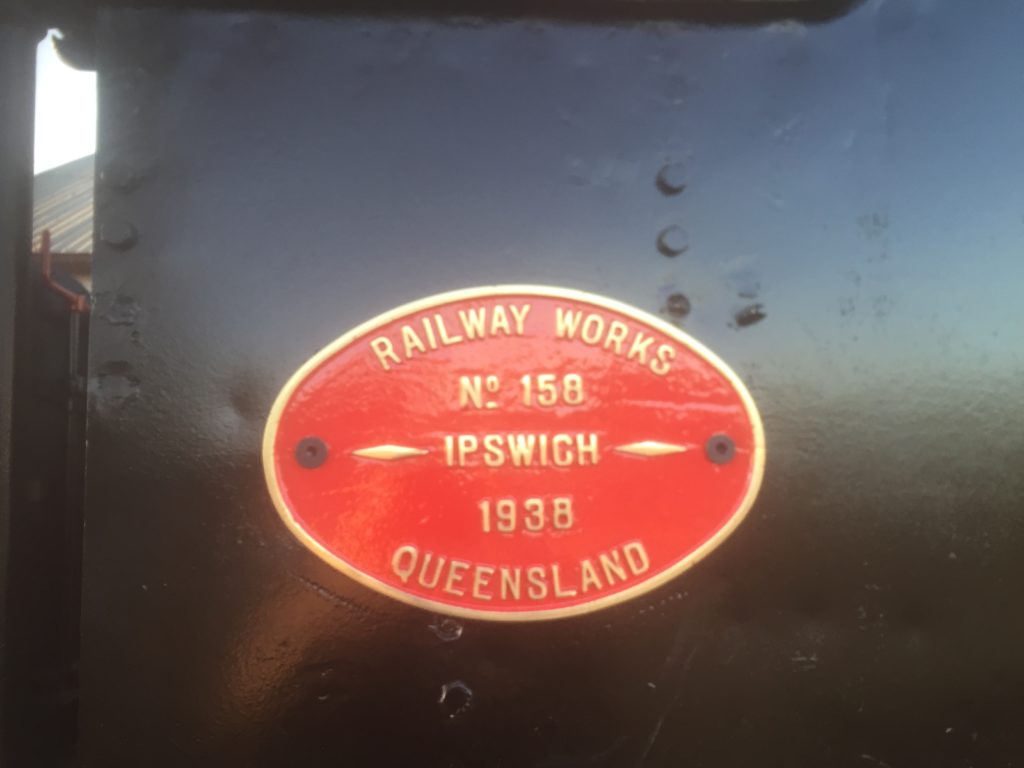Community stories: 26 February 2021
Many regional centres have discovered the value of heritage as a factor in tourism development. Cultural and historical attractions not only bring in income to the region, but give the local population the grounds to be proud of their unique heritage and provide opportunities to share it with tourists.
Injune is a small town in the Maranoa region of southern Queensland, about a seven hour drive west of Brisbane. The township was formed around the establishment of the Injune railway siding, which opened in 1920. It became the end of the line for the Roma-Injune line, which was constructed to support the Soldier Settlement blocks that were established at the end of the First World War. The railway closed in 1966.

In 1967, the C17 Locomotive No 824, which chugged up and down the track for nearly 30 years, was donated to the Bungil Shire and was stored along the recently closed line to Injune. The local history group was gifted the railway station from a local landholder, and it was then relocated and restored beside the C17 Locomotive.
The community has an emotional attachment to the locomotive and the train, due to its importance to the establishment of the town. It is also a popular point of interest for the tourist trade that passes through Injune on the way to the Carnarvon Gorge.

However, the loco’s charm and safety was slowly deteriorating, and had reached a stage of likely closure, as it posed a safety risk to the public. The Injune and District Tourism Association received a $10,000 Tackling Tough Times Together grant, funded by the Australian Government, to boost tourism and stimulate the local economy via restoration of the historically significant locomotive.
The old steam engine was restored to its former glory, with repairs firstly made to the boiler by the local welding company. Once this was done, the Tourism Association used the FRRR grant to sandblast the loco before repainting it in original, authentic heritage colours. Further funding was sourced to build a roof over the top to protect the paintwork for longer. The Tourism Association also researched and prepared story boards, which have been added to the walls of the station to tell the story of the importance of the railway to the township of Injune.
The restoration was completed in time for the centennial celebrations marking the arrival of the first train in 1920. This event attracted many locals and tourists alike, as well as old railway families, some of whom returned to Injune especially for the celebrations.
The use of historical and cultural heritage becomes one of real opportunities for economic, social and cultural recovery. Puddy Chandler, President of the Injune and District Tourism Association, said that by providing attractive and interesting attractions, it helps to encourage visitors to extend their stay in the community and region, which helps to increase economic spend.

“The project was very much a team effort between the QR historian, our local tourism group, the local history group and local businesses. By preserving special historical places, we will be able to support learning opportunities for our local children.
“We also now have an attractive community asset for when we celebrate our town’s centenary in 2022. By hosting large events, it increases economic benefit to our local business and non-for-profit groups. This will assist in employment, ensuring businesses remain open and viable. All this helps increase liveability in our small community,” she said.

